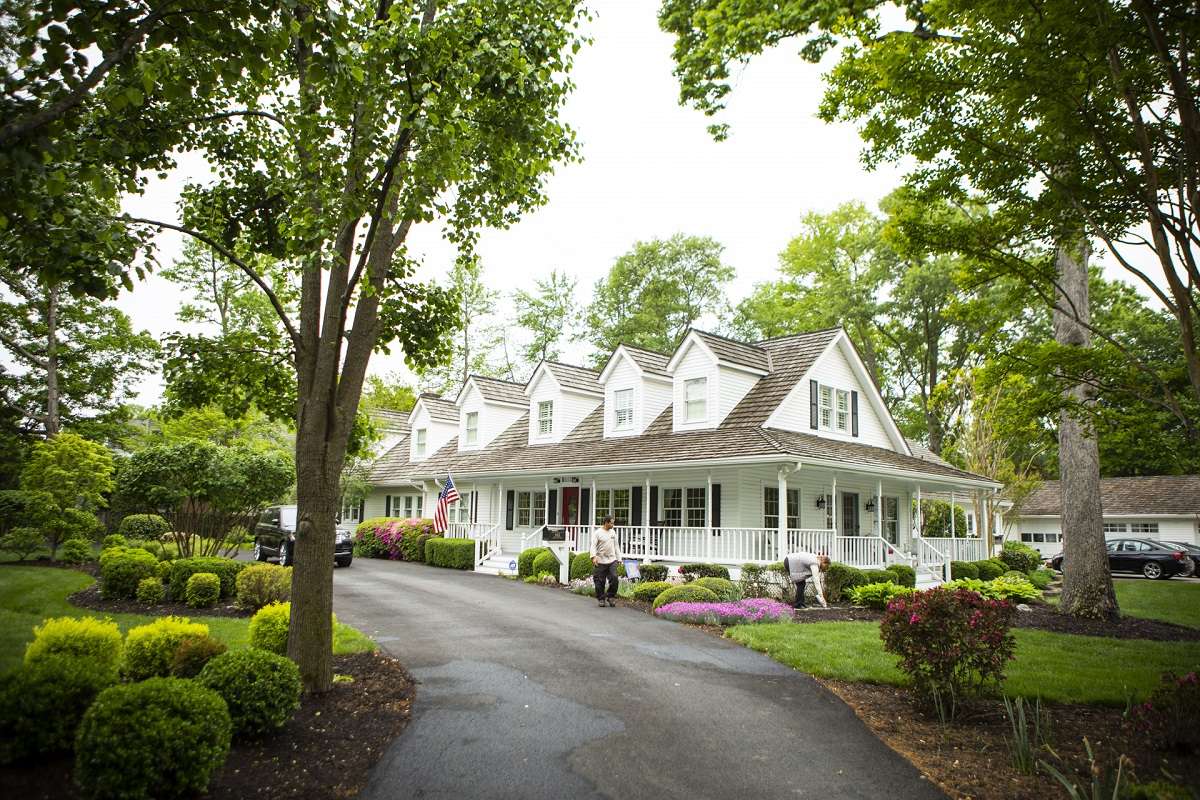

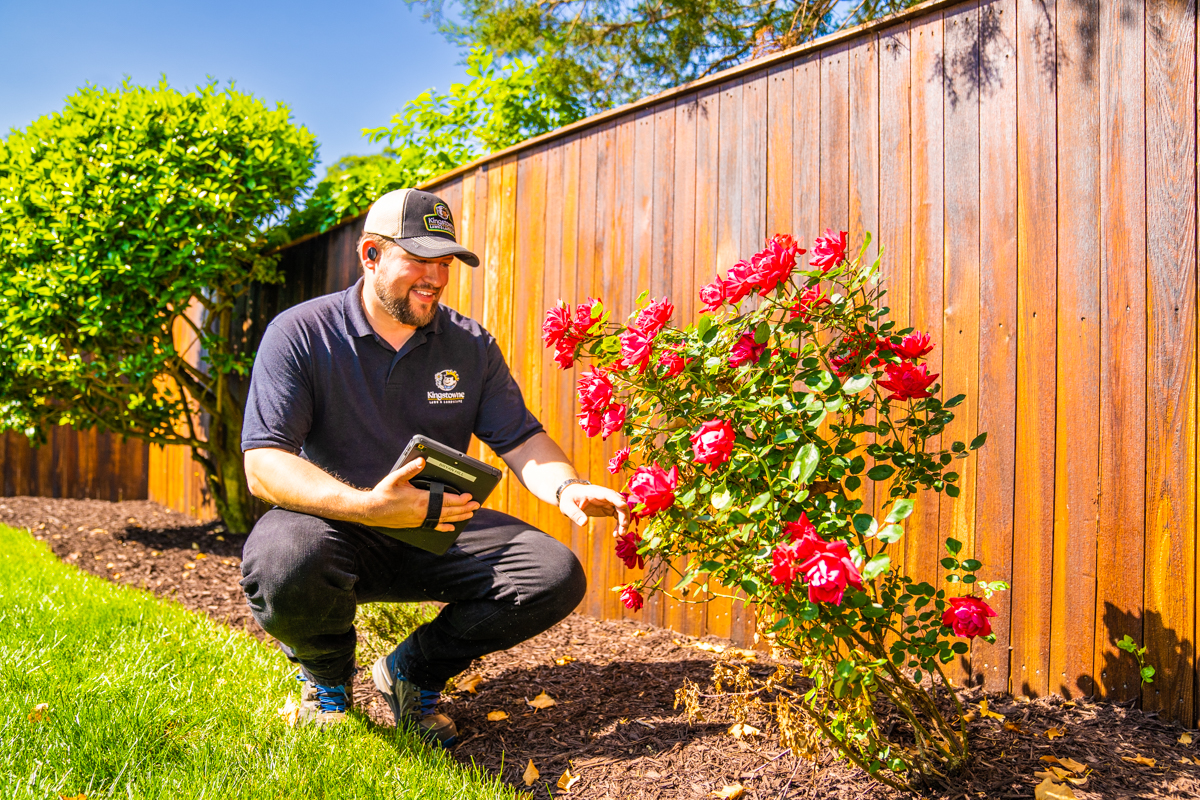
Japanese Beetles in Northern Virginia are plentiful. The Japanese Beetle is unfortunately a threat to your landscape throughout its lifecycle. When Japanese Beetles are born as grubs they feed on your grass roots. And once in the adult stage, Japanese Beetles will make a feast of your plants.
It’s no surprise that the Farmer’s Almanac has named the Japanese Beetle one of the “most troublesome pests.” They are known to cause damage to as many as 300 plant species including common favorites like Red Maple, Lilac, and Roses.
To help you better understand this pest and how to deal with it, we’re talking about things you ought to know about Japanese Beetles in Northern Virginia.
Hopefully, this will help you make better decisions for your Northern Virginia property.
Most people can probably recognize a Japanese Beetle amongst other pests. Adult Beetles are approximately a half-inch in length and are known for their shiny metallic green shells and copper wings.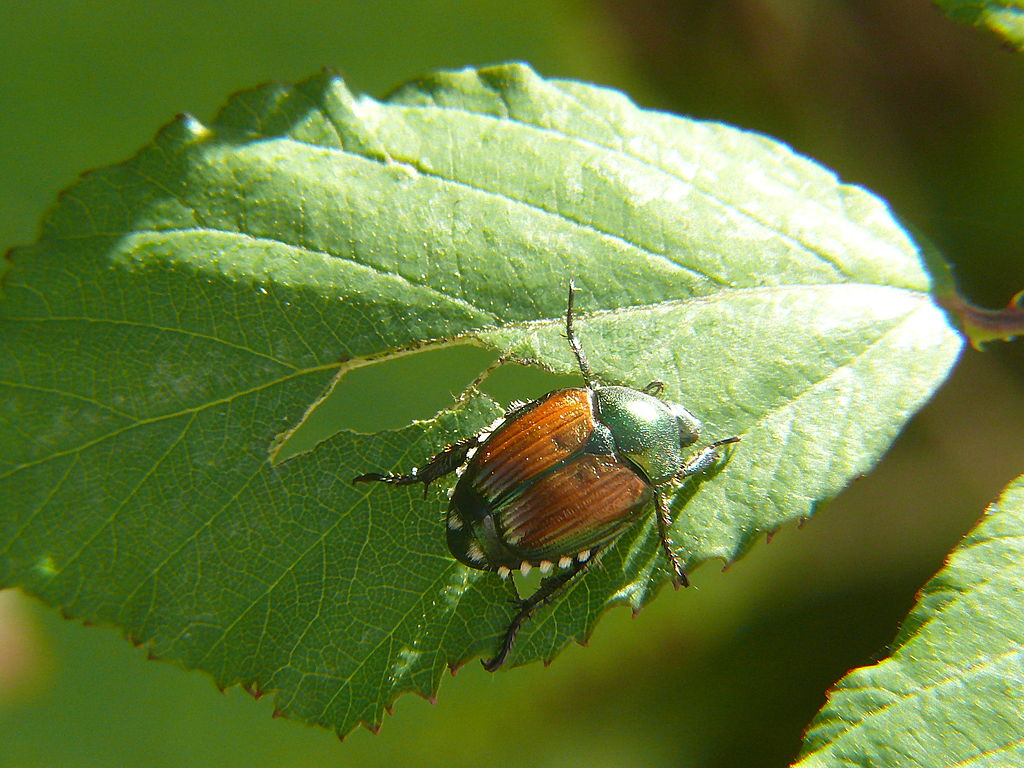
Japanese Beetles usually feed in groups so it’s unusual to spot just one. This is why they can do so much damage so quickly. Their damage is also very noticeable. Their sharp, chewing mouthparts will actually skeletonize leaf tissue, leaving behind only the vascular section.
As we mentioned, Japanese Beetles will eat as many as 300 different species of plants. They feed on the foliage and fruits of fruit trees, ornamental trees, shrubs, vines, and vegetables. 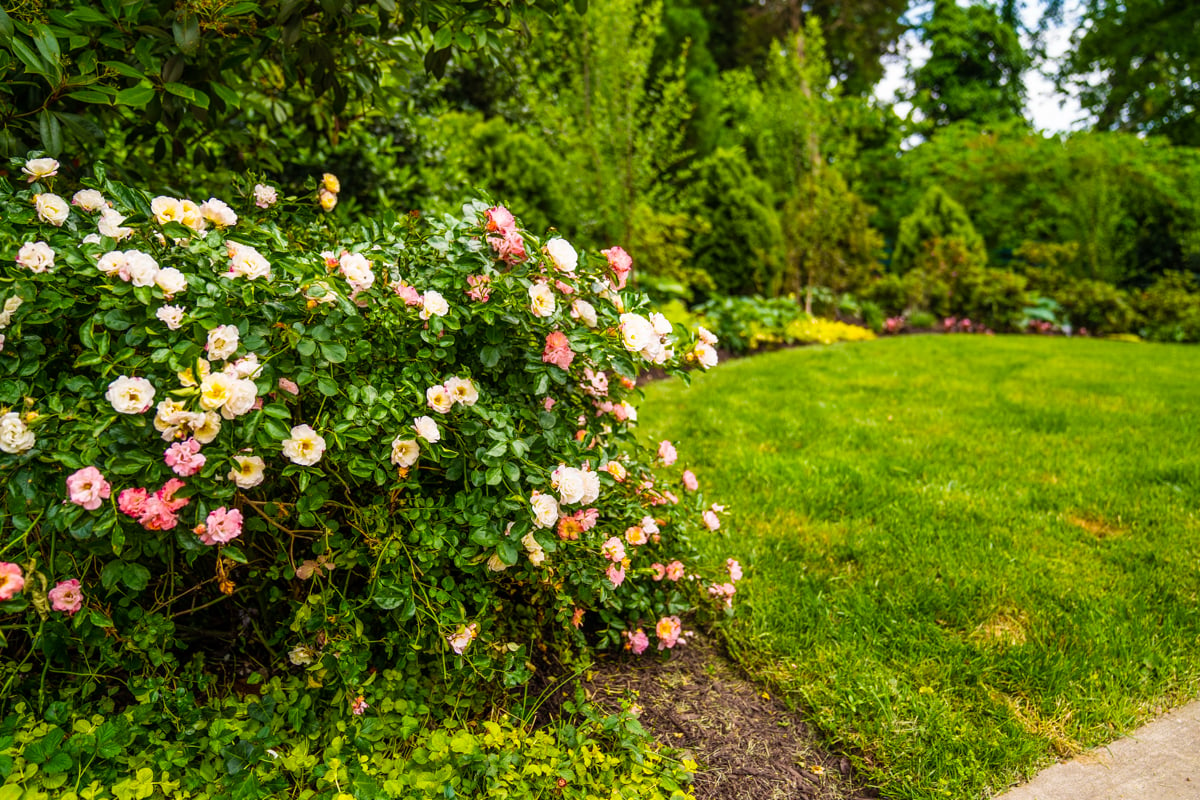 As far as specifically what plants Japanese Beetles eat, here are some favorites.
As far as specifically what plants Japanese Beetles eat, here are some favorites.
Japanese Beetles can quickly skeletonize leaves since they tend to feed in groups. They might also create large, irregular holes in leaves.
There are actually some plants that Japanese Beetles tend to avoid. They generally do not like Catnip, Onion, Chives, and Marigolds. It is surmised that this might have more to do with the plants’ scent. However, the hungry Japanese Beetle can overcome these dislikes if motivated to eat.
Adult Japanese Beetles in Northern Virginia usually emerge from the ground in late June to start feeding on plant foliage. Most will have emerged by mid-July. This period from late June through July is considered prime “Beetle season.”
Japanese Beetles then lay their eggs in the soil from mid-July to mid-August. By mid-August, grubs will emerge and start causing damage to your lawn.
The Japanese Beetle seems relatively small enough that sometimes it’s hard to imagine it can decimate an entire plant.
But as we mentioned, it’s the fact that the Beetle feeds in groups that are so harmful.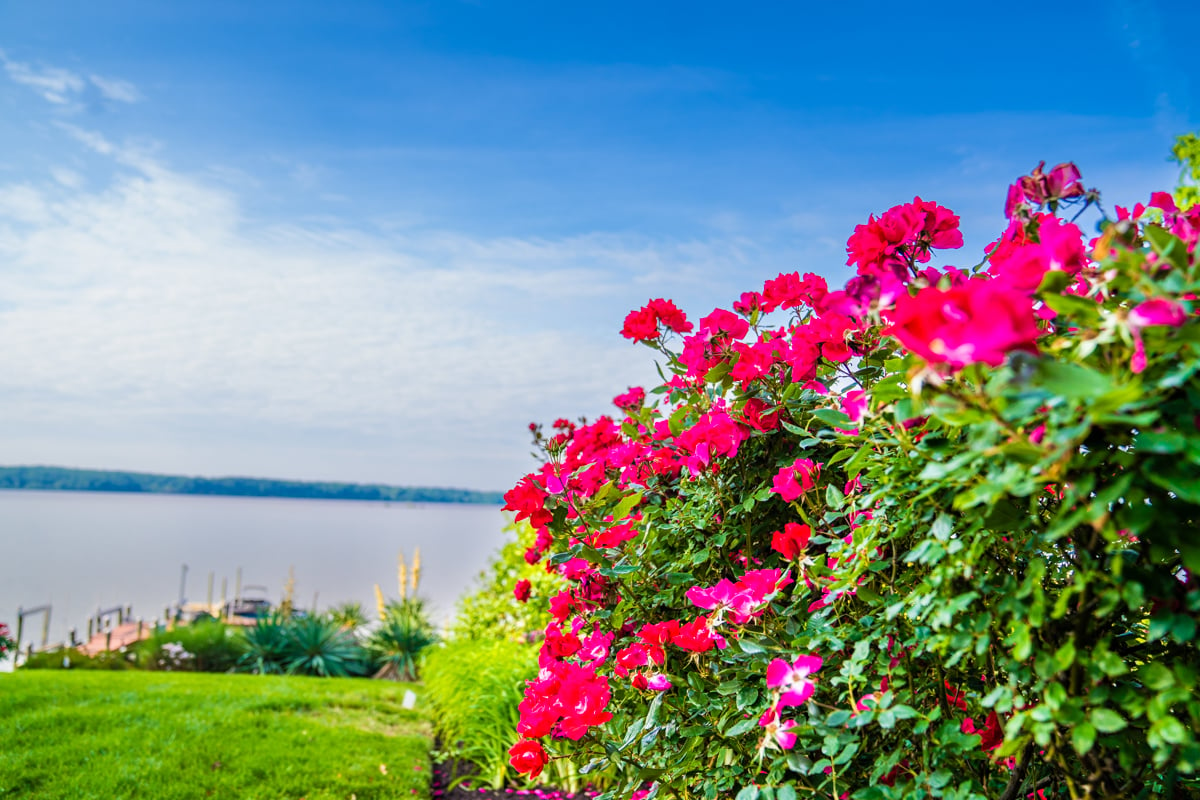
A single Beetle will not do much damage on its own. But when one Beetle finds a great place to eat, it will release a pheromone that attracts other Beetles to that location. Soon, you will have many Beetles feeding on your landscape plants.
There are various homemade concoctions out there that claim to help keep Japanese Beetles off of your plants. Things like dish soap and neem oil are said to help but we doubt they are overly effective with a pest as destructive as this one. Homeowners are also surprised that we advise strongly against is using a Japanese Beetle trap. People do not realize that these traps will only attract MORE Beetles to your property.
Traps work by releasing a pheromone that attracts Beetles. But all you are doing is drawing more Beetles to your property from other yards. Yes, your trap will fill up. But you might also be attracting more pests to your property that decide to feed on your plants before eventually making their way to the trap.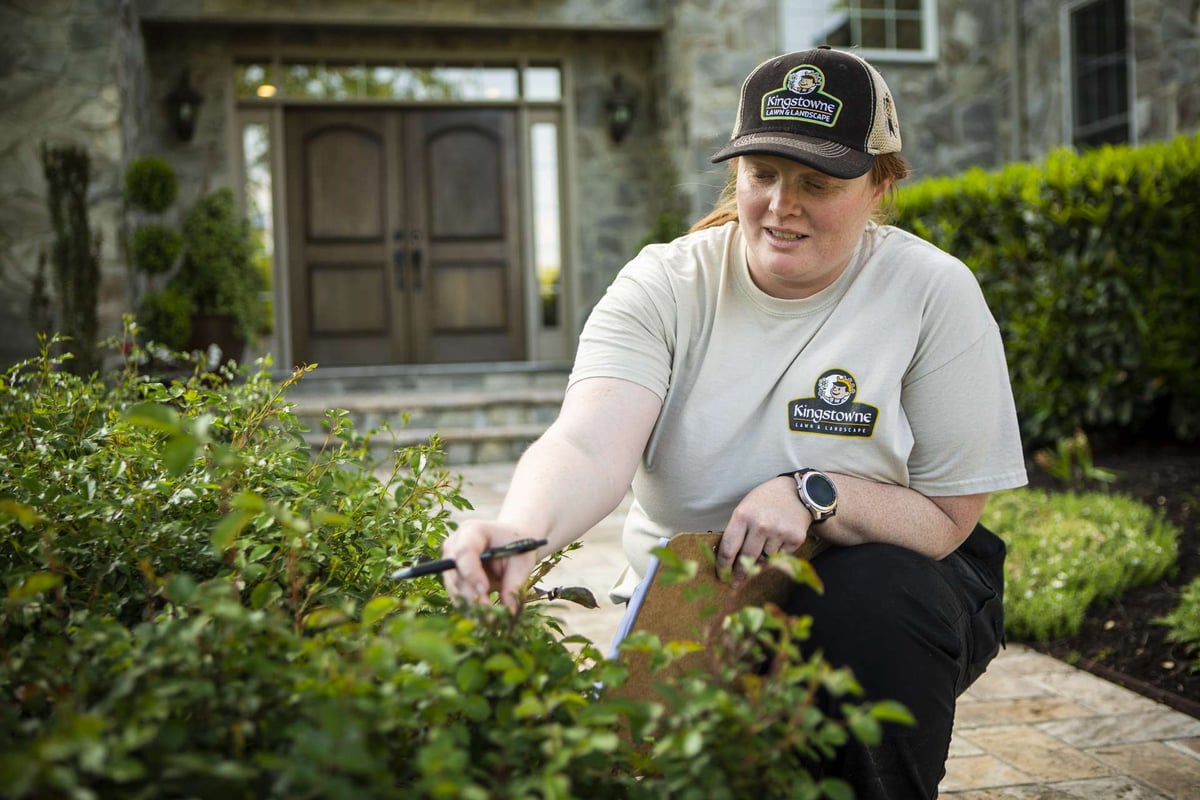
The best way to get rid of Japanese Beetles is actually to put an end to their continuous cycle of destruction with preventative grub control. A preventative grub control program will address young grubs as they hatch. At Kingstowne Lawn & Landscape, we know how important this service is, which is why we include it in all of our lawn care programs.
Of course, if you already have an existing problem, you might want to know how to get rid of Japanese Beetles. Our Plant Health Care Services includes a treatment that kills these pests on contact. It will also boost the overall health of your plants and address other issues they might be dealing with.
While Japanese Beetle damage is highly noticeable, there’s a high probability that your landscape is dealing with other pests and diseases, too. 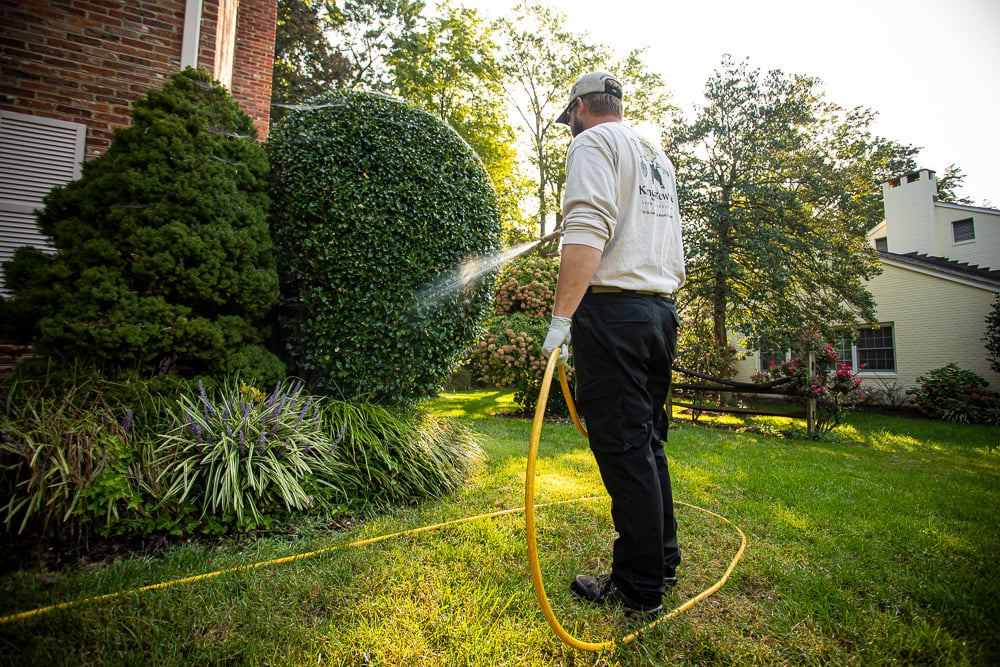
In addition to Japanese Beetles, some of the other common problems that we see in the landscape include:
If your plants are already struggling with problems, they can easily be destroyed by Japanese Beetles. But the healthier your plants are, the better they’ll be able to withstand potential problems.
While it’s easy not to think about plant problems if you’re not actively noticing something, once a pest or disease takes over, you might be sorry you didn’t act sooner.
At Kingstowne Lawn & Landscape, we focus on prevention. The simple fact is, ignoring Plant Health Care can be more costly than paying to prevent issues. If your plants succumb to pests, disease, or environmental stressors, it could cost you way more (money, time, aggravation, reputation, and ultimately, peace of mind).
Chances are, you’ve invested heavily in your landscape. That may be through maintenance tasks or even the thousands of dollars worth of plant material that is growing on your property (whether you’ve planted it or someone before you). It only makes sense to protect that investment with plant health care focused on your trees and shrubs of 20 feet or less.
If you’d like to discuss plant health care for your landscape near Arlington, Alexandria, or Springfield, VA, request a quote, get your customized plan, and relax knowing that your plants are in good hands.
Image Source: Beetle

Since 1997, Krisjan has led the Kingstowne team with one simple philosophy, treat every customer like the “only” customer. His passionate pursuit of impeccable customer service has resulted in 24 successful years and a thriving company with over 85 employees, helping thousands of homeowners in the Alexandria, Arlington, and Springfield, VA area get what they want - a worry-free property they can be proud of.


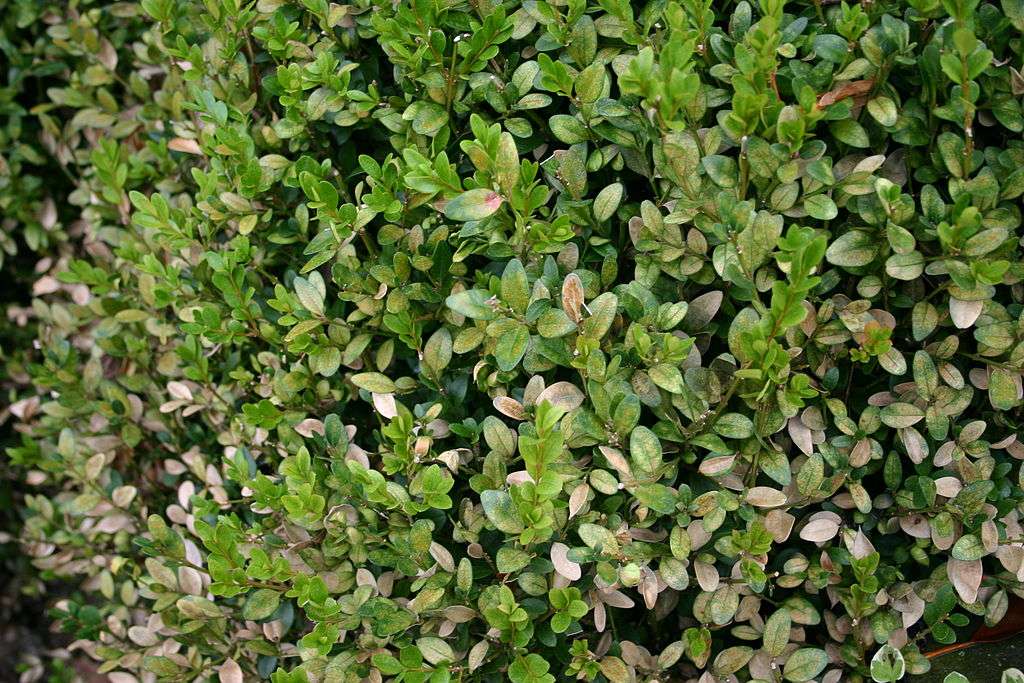

If You're Looking For a Sign, This is It.
Seriously, that lawn isn't getting any better on it's own. Mrs. Jones just called the HOA on you